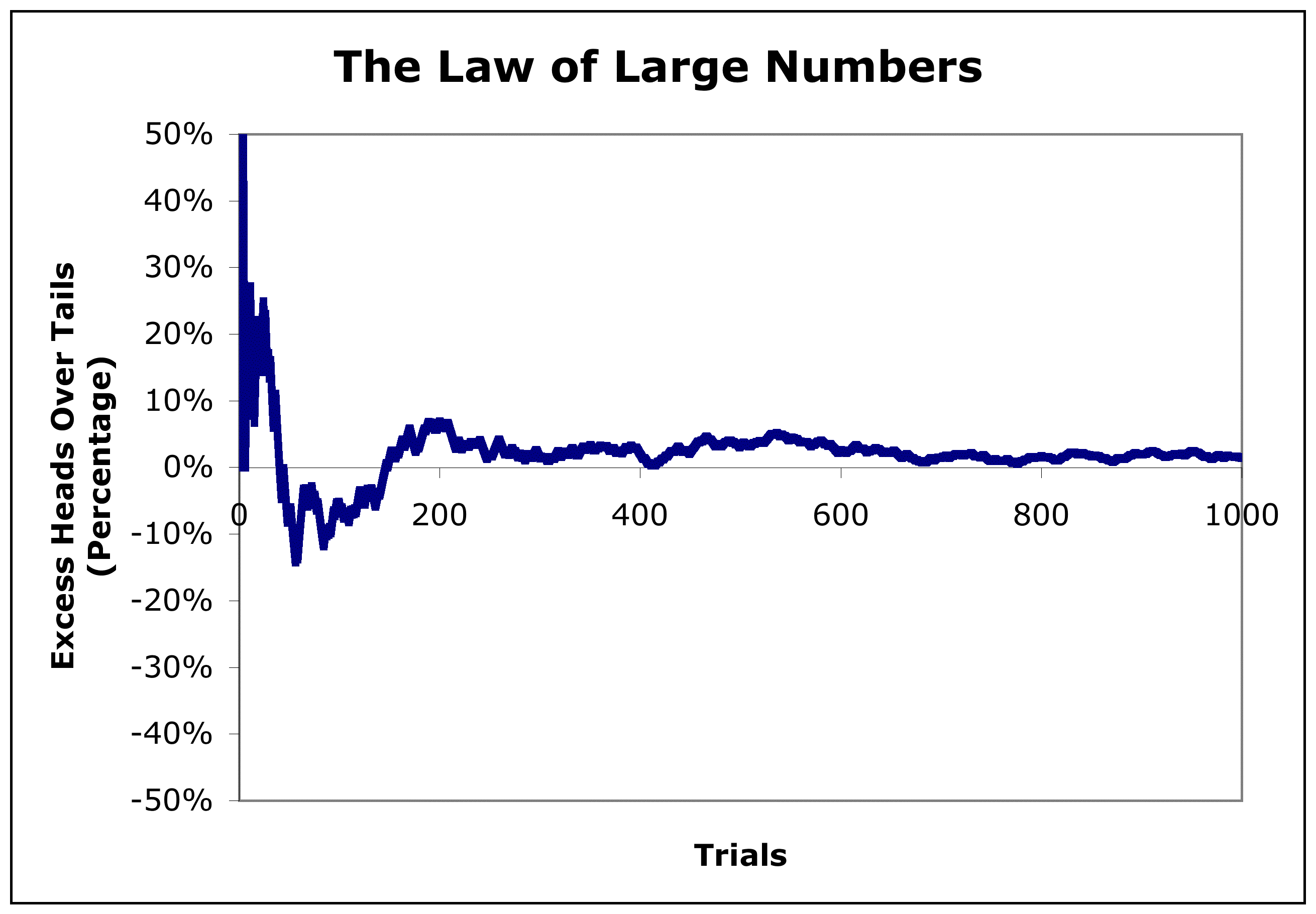What is The Law of Large Numbers and Should You Ever Sell at a Loss?
The Law of Large Numbers states that as the number of trials or observations increases, the actual or observed probability will approach the theoretical or expected probability.
This can be easily visualized when thinking of flipping a coin. A coin has the probability of 50/50 landing heads or tails. In 10 trials it is possible to get all heads, all tails, or an uneven match up of the two resulting in the probability of returning heads/tails in 10 trials not equal to the theoretical probability value 50/50.
However, if we tossed the coin 1,000,000 times or 10,000,000 times we would actually see the resulting probability get really close to the theoretical probability. In short, the more you flip the coin, the closer you get to a 50/50 probability of getting heads or tails.
This phenomenon is known as the Law of Large Numbers. If we were to visualize this, the results would look similar a stock market or an exchange stochastic.

Media Source: http://www.j-bradford-delong.net/movable_type/images2/cltheorem
This is important to know, because let’s assume you've bought Bitcoin at $5700, and its theoretical average value is $5500. Assuming nothing crazy or drastic happens (which is always a possibility!) the price will not deviate (fall/rise) too far away from its theoretical average value.
Meaning if you bought at $5700, and it drops down to $5300 considering our assumptions, if you patiently wait it can rise back to your buying price, or even higher over a given period of time. This means, there’s no reason for you to sell at a loss unless you’ve justified another way.

Media Source: http://www.blazingcariboustudios.com/
However, you should always proceed with caution. A common misconception about the Law of Large Numbers is known as the Gambler's Fallacy. Cool name, right? Sadly, this mistake has costed millions of people billions of dollars.
The Gambler's Fallacy states that in some countable period of time if something happens more frequently than normal, its probability of reoccurring HAS to drop. In other words, if I flip a coin 4 times and get 4 tails, the 5th trial has a higher probability of getting heads. This is false because each coin flip is independent.
Applying this to trading, in a “short” period of time if the price of Bitcoin is dropping, far away from its theoretical average it doesn’t have to immediately rise back up. However, In the grand scheme over a long period of time it will meet with its average value.

Media Source: http://i2.cdn.turner.com/
In short: The Law of Large Numbers states that as you increase number of observations; the observed probability will approach the theoretical probability. With understanding that you should try not to sell at a loss unless it is justified, and beware the gambler's fallacy: Just because you’re wrong 5 times doesn’t mean the 6th time you’re correct!
Note: This is for educational purposes only, I am not reliable for any consequences you’ve made in trading, gambling, etc.
Congratulations @mindhacks! You have completed some achievement on Steemit and have been rewarded with new badge(s) :
Click on any badge to view your own Board of Honor on SteemitBoard.
For more information about SteemitBoard, click here
If you no longer want to receive notifications, reply to this comment with the word
STOPInsightful.
Thank you!
Congratulations @mindhacks! You have completed some achievement on Steemit and have been rewarded with new badge(s) :
Click on any badge to view your own Board of Honor on SteemitBoard.
For more information about SteemitBoard, click here
If you no longer want to receive notifications, reply to this comment with the word
STOP